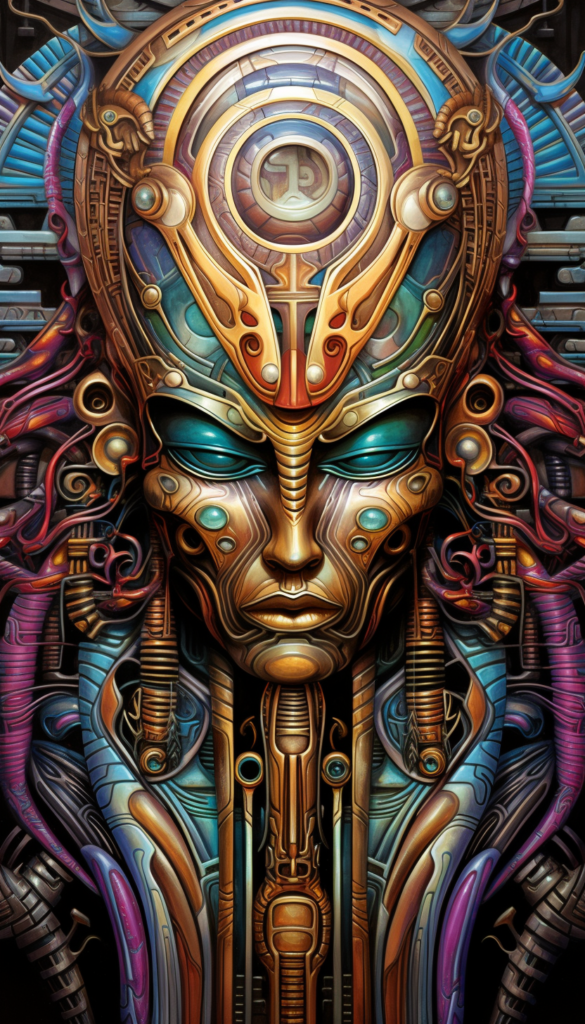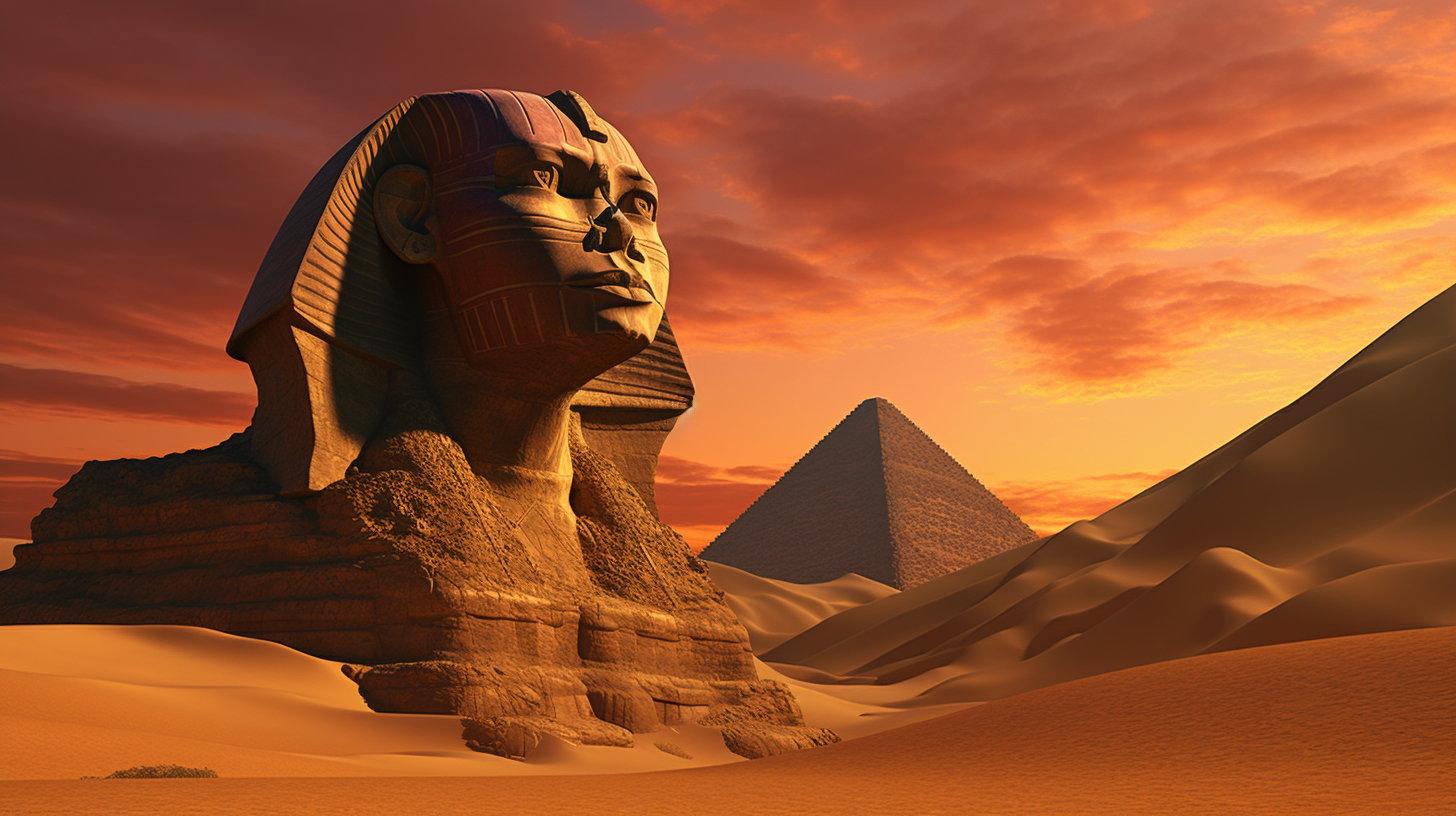The Sphinx: A Majestic Enigma of Ancient Egypt
The Sphinx of Giza, with its enigmatic features and colossal size, stands as a testament to the architectural prowess and artistic vision of ancient Egyptians. This colossal statue, which guards the Pyramids of Giza, continues to mystify historians, archaeologists, and visitors alike. Let’s delve into its history and significance.
Origins and Construction
The Sphinx is located on the Giza Plateau, adjacent to the Great Pyramids of Khufu, Khafre, and Menkaure. It’s generally believed that the Sphinx was carved during the 4th Dynasty of the Old Kingdom, specifically during the reign of Pharaoh Khafre (c. 2570-2450 BCE). The monument depicts a lion with the head of a human, traditionally believed to represent Pharaoh Khafre himself.
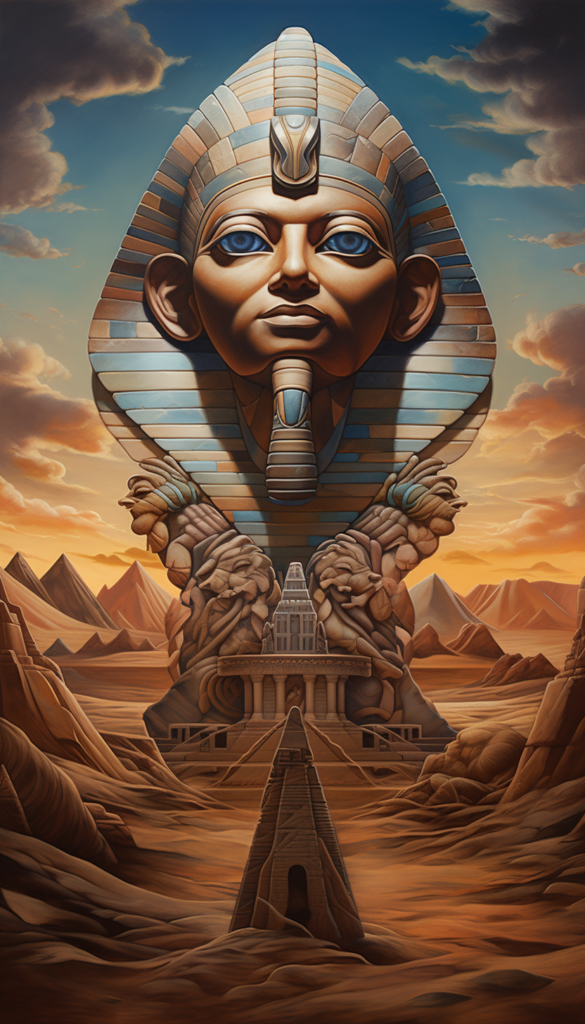
Constructed from limestone, the Sphinx originally measured 73 meters (240 feet) in length and 20 meters (66 feet) in height. Over the millennia, however, erosion, natural disasters, and human activity have damaged this monumental statue.
Purpose and Symbolism
The precise purpose of the Sphinx remains a subject of debate among scholars. The statue might have served as a guardian of the Giza necropolis, representing the combined strength and wisdom of the pharaoh. Its location, gazing due east, suggests a relationship with the sun god Ra, with the Sphinx possibly acting as a symbol of the harmonious union between the sun and the earth.
Lions were symbols of power and protection in ancient Egyptian culture. Thus, by portraying the pharaoh as a lion with a human head, it emphasizes his dual role as both a divine protector and a wise ruler.
Theories and Controversies
Throughout history, the Sphinx has been the subject of numerous theories and speculations. One of the most famous controversies surrounds the age of the statue. While mainstream archaeology asserts that the Sphinx dates back to the Old Kingdom period under Pharaoh Khafre, some alternative theories suggest it could be far older, possibly even predating dynastic Egypt.
Further, the mystery of the missing nose is often a point of discussion. Contrary to popular belief that Napoleon’s troops shot off the nose, drawings from the 18th century, before Napoleon’s arrival in Egypt, depict the Sphinx without its nose. The actual cause of the damage remains unknown.

Another subject of intrigue is the existence of potential hidden chambers beneath or within the Sphinx. Over the years, various explorations using modern technology like ground-penetrating radar have tried to detect such chambers, but concrete evidence is yet to be discovered.
Restoration Efforts
The Sphinx has undergone several restoration efforts, especially in the 20th and 21st centuries, to prevent further erosion and degradation. These works have been a blend of preserving its antiquity while ensuring its survival for future generations.
The Riddle of the Sphinx: A Timeless Enigma
One of the most iconic conundrums to emerge from ancient mythology is the Riddle of the Sphinx. A puzzle posed by a mythical creature to challenge the intellect and wit of man, its solution signifies a profound understanding of the human condition. Let’s delve into the history, content, and significance of this ancient riddle.
Origin of the Sphinx in Mythology
The Sphinx, as a mythological entity, is not unique to Egyptian culture; it also occupies a prominent space in Greek lore. The Greek Sphinx is typically depicted as a creature with the head of a woman, the body of a lion, and the wings of a bird, a stark contrast to the human-headed lion of Egypt.
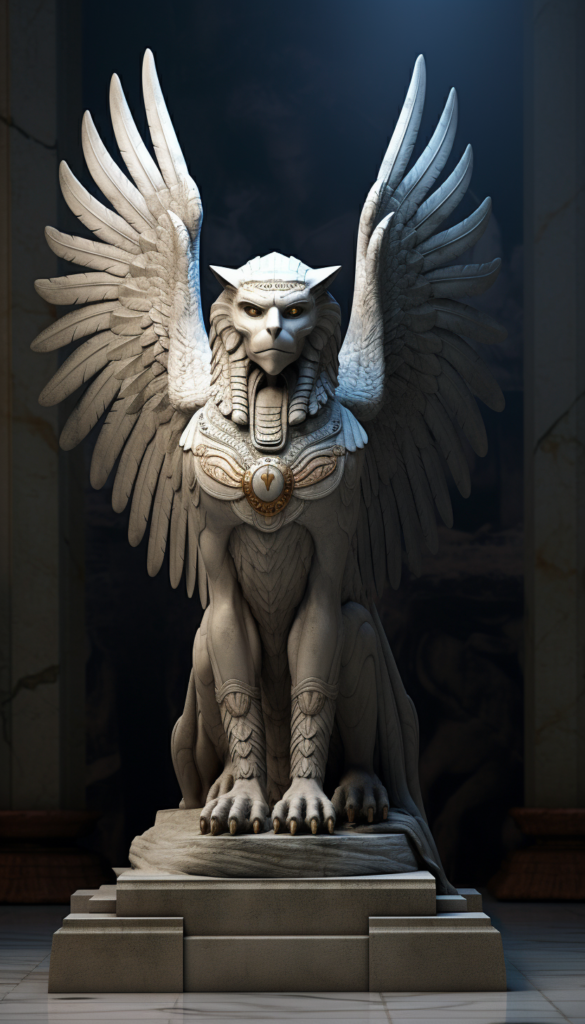
The most famous story involving the Sphinx is set in the city of Thebes in ancient Greece. According to legend, the Sphinx sat on a rock outside the city and posed a riddle to all who passed by. Those who could not answer were strangled and eaten by the creature.
The Riddle
The Sphinx’s riddle, though varied in different accounts, is most famously rendered as:
“Which creature has one voice and yet becomes four-footed and two-footed and three-footed?”
Oedipus, the hero of Thebes, is the one who ultimately confronts the Sphinx and provides the correct answer. He replies: “Man—who crawls on all fours as a baby, then walks on two feet as an adult, and then uses a walking stick in old age.”
Upon hearing the correct answer, the Sphinx, defeated, throws herself from her high rock and perishes.
Symbolism and Interpretation
The Riddle of the Sphinx has been a subject of fascination not just for its clever construction but also for its deep philosophical undertones. The riddle’s solution represents the various stages of a human’s life—from infancy to old age. It underlines the inevitability of aging and the transient nature of life.
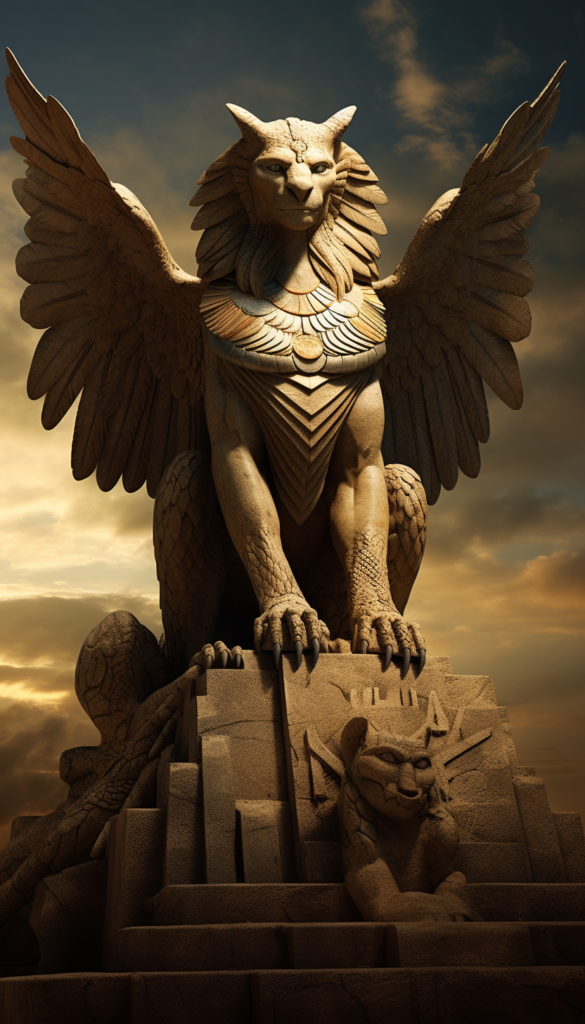
Furthermore, the challenge of the riddle and its fatal consequence for those who couldn’t solve it can be seen as a metaphor for the challenges and enigmas that life presents. It suggests that wisdom and understanding are essential tools for survival.
Modern References
The Riddle of the Sphinx has found its way into numerous modern cultural references, from literature and films to video games. It serves as a universal metaphor for a problem or enigma that needs to be solved. It’s also frequently used as a metaphor in discussions about puzzles, enigmas, or mysteries in various contexts.
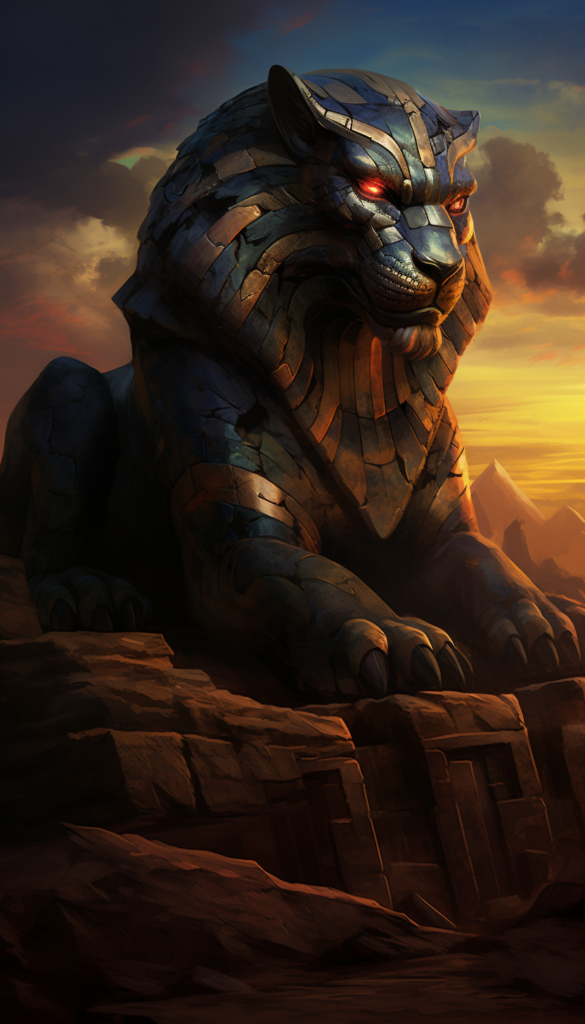
The Sphinx in Hermetic High Magick: A Pillar of Mysticism
The Hermetic traditions and high magick have deep roots in the esoteric mysteries of antiquity. While symbols such as the Tree of Life, the Rose Cross, and the Ankh are commonly associated with these traditions, the Sphinx occupies a particularly distinguished space in Hermetic magickal lore. The Sphinx’s symbolic presence embodies the integration of elemental powers and the quest for enlightenment. This article delves into the pivotal role the Sphinx plays in the realm of Hermetic high magick.

The Four Powers of the Sphinx
A foundational concept in Hermetic high magick is the ‘Four Powers of the Sphinx’, also referred to as the ‘Four Pillars of Wisdom’. They are traditionally symbolized by the mantra: “To Know, To Will, To Dare, To Keep Silent.” Each power corresponds to an elemental force and aspect of the Sphinx:
- To Know (Scire) – Associated with the element of Air and the Man’s head on the Sphinx. This power denotes the intellectual and knowledge-based aspects of magickal work.
- To Will (Velle) – Linked with the element of Fire and the paws of the Lion. This represents the magician’s inner drive, determination, and transformative energy in rituals.
- To Dare (Audere) – Corresponds to the element of Water and the abdomen of the Bull. It signifies the courage and emotional depth required to confront the mysteries of the unconscious and the unknown.
- To Keep Silent (Tacere) – Associated with the element of Earth and the hind legs of the Sphinx, which are sometimes represented as that of a serpent. Silence is viewed as the grounding force and the containment of power.
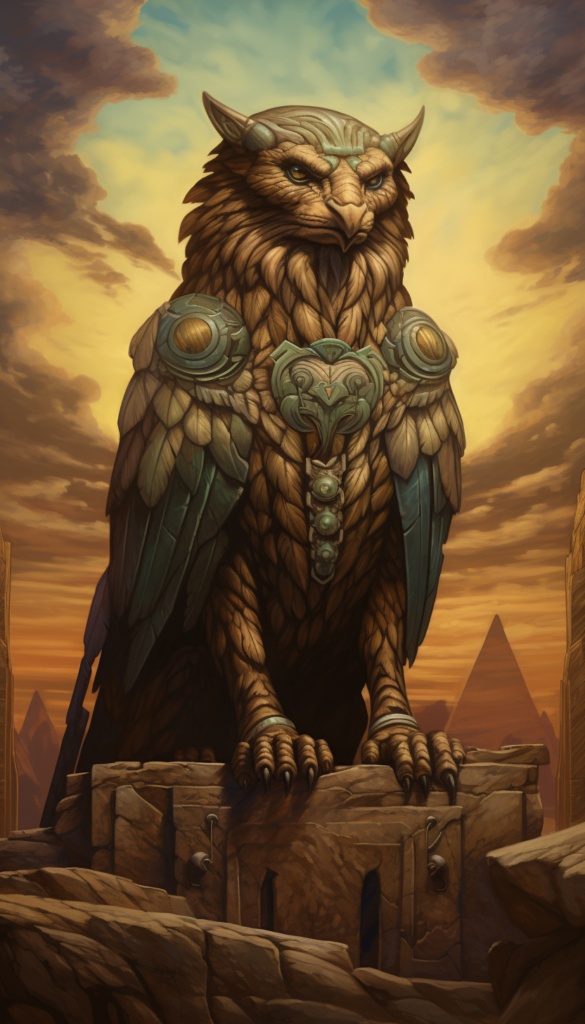
Integration and Balance
The Sphinx, in Hermetic magick, exemplifies the harmonious integration of these elemental forces. Just as the Sphinx combines the attributes of multiple creatures, the practitioner of high magick seeks to harmonize diverse energies within themselves and the cosmos. This balance is pivotal for the practitioner’s spiritual ascent and effective magickal operations.
The Quest for the Unknown
The Sphinx’s role as a guardian and keeper of mysteries mirrors the Hermetic mage’s journey into the unknown. Just as Oedipus had to solve the riddle of the Sphinx to access Thebes, the practitioner must confront and integrate the teachings of the Sphinx to attain higher realms of consciousness and mastery.

Meditative Symbolism
Many Hermetic orders and practitioners use the image of the Sphinx in their meditative practices. By meditating upon the Sphinx, one seeks to access the primal forces it represents, channeling them for spiritual evolution, self-understanding, and magickal empowerment.
Conclusion
The Sphinx, in the context of Hermetic high magick, is not just an artifact of ancient civilization but a living symbol of profound esoteric teachings. It beckons magicians to integrate diverse energies, challenges them to unravel mysteries, and aids in their spiritual ascent. The Sphinx remains a timeless emblem, bridging ancient wisdom with contemporary spiritual practice in the Hermetic traditions.
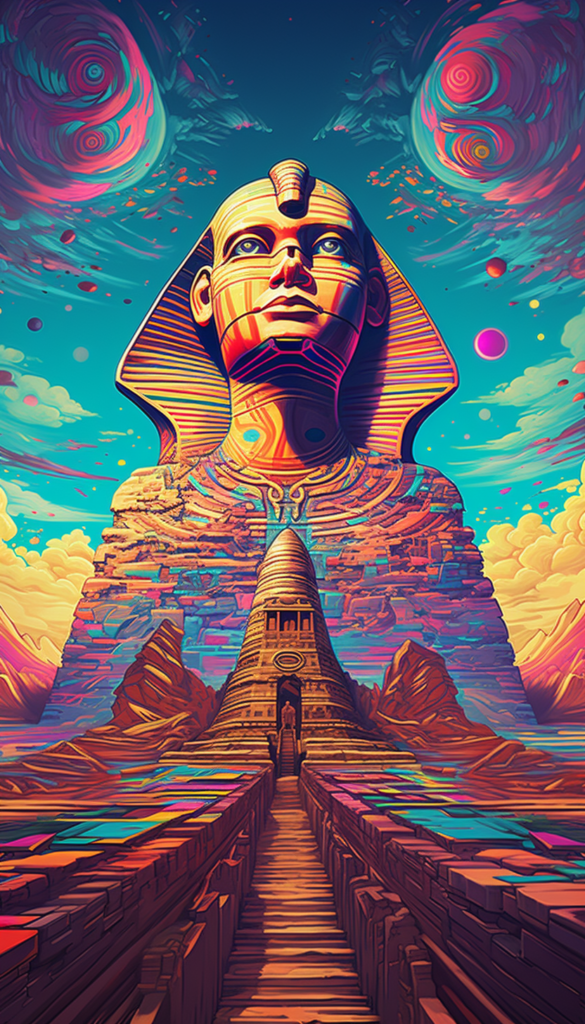
The Riddle of the Sphinx, with its profound layers of meaning, stands as one of the most enduring symbols of human introspection. It’s a testament to the ancient world’s ability to weave philosophy, narrative, and myth into a compelling tale that not only entertains but also prompts deep reflection on the nature of life and the human journey.
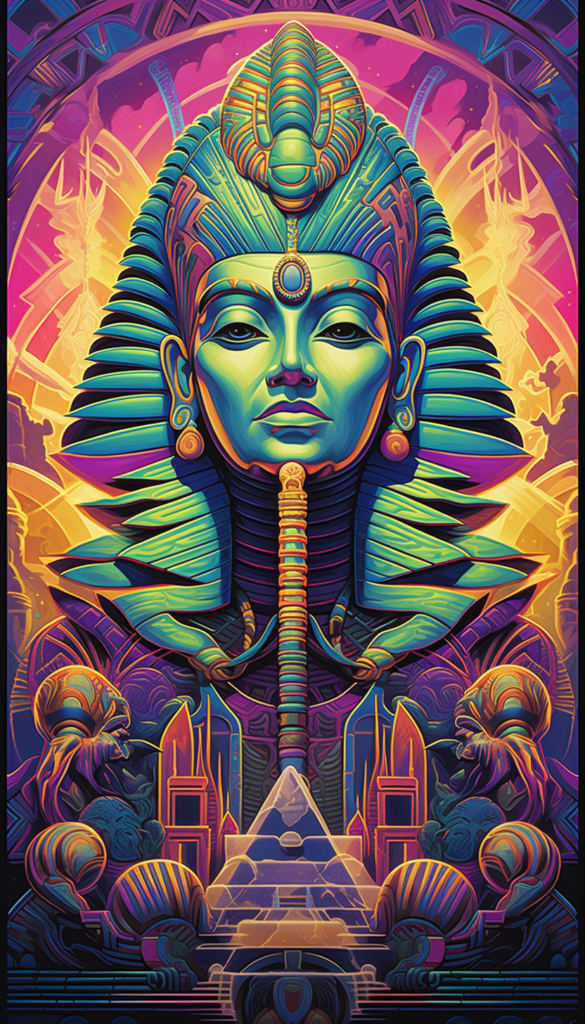
The Sphinx, a blend of architectural genius and artistic beauty, stands as an eternal enigma from the pages of history. It’s not just a monument but a testament to the ambition, vision, and grandeur of the ancient Egyptian civilization. As we continue to unearth its mysteries, the Sphinx remains a symbol of timeless wonder and awe, bridging the past with the present.
